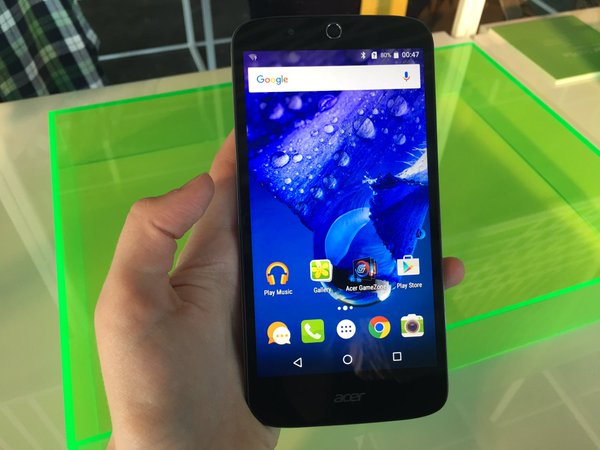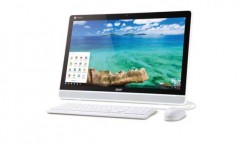By Steve Pak, | April 23, 2016

Acer's Liquid Zest Plus
Acer unveiled its new Liquid Zest Plus smartphone among other devices at its New York event on April 21, Thursday. The new handset is a larger version of the Acer Liquid Zest handset introduced at Mobile World Congress (MWC) this year. It features a $250 price tag and a huge 5000mAh battery that supports fast charging.
Like Us on Facebook
Liquid Zest Plus will compete with other big-battery smartphones including Samsung Galaxy A9 Pro, Asus ZenFone Max, and Lenovo Vibe P1 Turbo, according to NDTV.
Acer's new handset includes a 5.5-inch 720-pixel x 1280-pixel display. It includes a 1.3GHz quad-core MediaTek (MT6735) SoC, 2GB of RAM, and 16GB of built-in storage.
Liquid Zest Plus also has a 13-megapixel camera with LED flash and 5-megapixel front-facing camera. It also contains a new feature called "tri-focus" that includes laser and phase detection.
The Taiwanese company's new smartphones runs Android 6.0 Marshmallow.
Acer also unveiled other devices at its New York event. They include the Switch Alpha 12 liquid-cooled 2-in-1 notebook. It features a fanless design and the company's Acer LiquidLoop cooling tech to provide silent operation.
Acer also unveiled virtual reality-ready desktops and notebooks. This expands its Predator line-up to include devices running Microsoft's Windows 10. It also announced an upgraded Aspire R15 that it claims is the world's thinnest 15-inch 360-degree convertible.
In addition, the company announced the Acer Chromebook 14 for Work. It includes a 6th-gen Intel Core processor and reportedly is the first notebook that features Corning Gorilla Glass protection. The laptop complies with United States Military Standard testing and includes an operation USB Type-C dock.
In related news, researchers at the University of California at Irvine have discovered a way to build a 200,000-cycle smartphone and laptop battery. It is based on the principle that a lithium battery has "spillage" like a water bottle that results from repeatedly charging an empty battery, according to PC Mag.
Researchers replaced lithium batteries with gel. This prevented the power source from losing high amounts of capacity after more than 200,000 charging cycles.
Researchers used a gel electrolyte to replace a liquid electrolyte in a nanowire battery. Researchers are not entirely sure how the gel helps to prevent capacity loss.
-
Use of Coronavirus Pandemic Drones Raises Privacy Concerns: Drones Spread Fear, Local Officials Say

-
Coronavirus Hampers The Delivery Of Lockheed Martin F-35 Stealth Fighters For 2020

-
Instagram Speeds Up Plans to Add Account Memorialization Feature Due to COVID-19 Deaths

-
NASA: Perseverance Plans to Bring 'Mars Rock' to Earth in 2031

-
600 Dead And 3,000 In The Hospital as Iranians Believed Drinking High-Concentrations of Alcohol Can Cure The Coronavirus

-
600 Dead And 3,000 In The Hospital as Iranians Believed Drinking High-Concentrations of Alcohol Can Cure The Coronavirus

-
COVID-19: Doctors, Nurses Use Virtual Reality to Learn New Skills in Treating Coronavirus Patients











